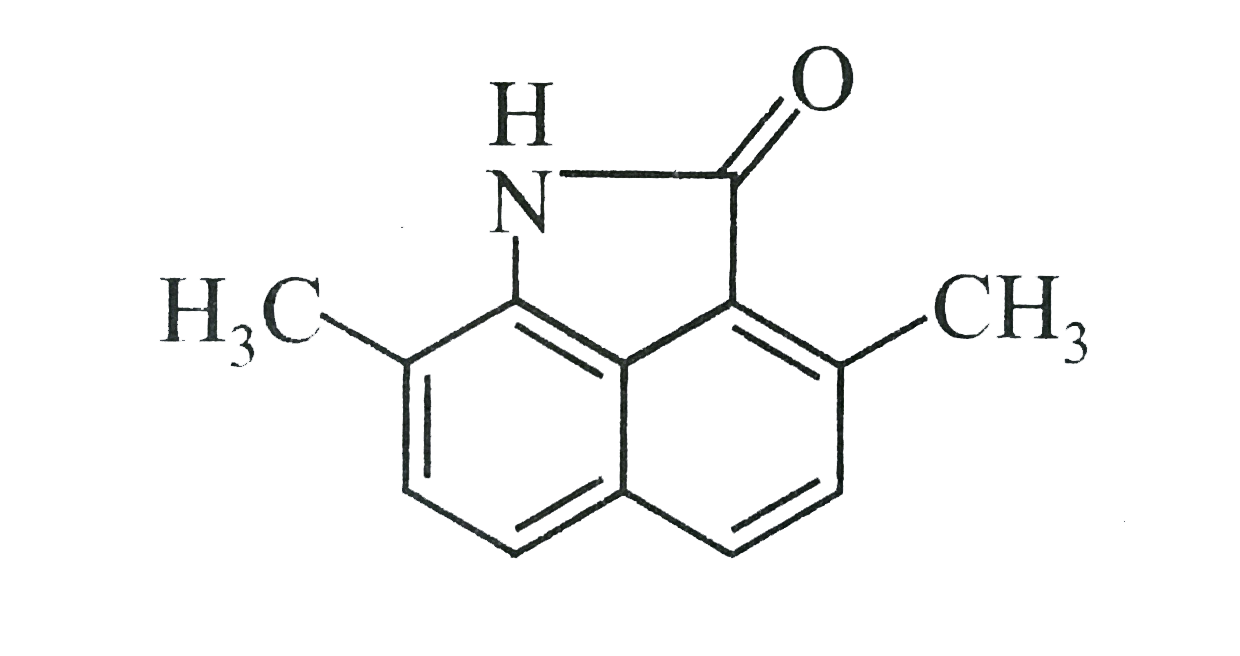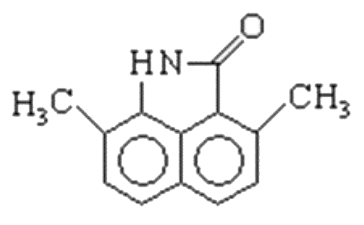The major product obtained when - Butane is treated with bromine in the presence of light is
CH3−CH2−CH2−CH2−Br



The correct Answer is:B
To determine the major product obtained when butane is treated with bromine in the presence of light, we will follow these steps:
Step 1: Understand the Structure of Butane
Butane (C4H10) has the following structure:
- CH3-CH2-CH2-CH3
Step 2: Identify the Reaction Conditions
The reaction involves bromine (Br2) in the presence of light. The light causes the Br2 molecule to undergo homolytic cleavage, producing two bromine radicals (Br•).
Step 3: Identify the Types of Hydrogen Atoms in Butane
In butane, there are two types of hydrogen atoms:
1. Terminal hydrogens (attached to the CH3 groups)
2. Internal hydrogens (attached to the CH2 groups)
Step 4: Radical Formation
When a bromine radical (Br•) reacts with a hydrogen atom in butane, it can abstract a hydrogen atom, leading to the formation of a butyl radical. This can occur at either of the two types of hydrogen atoms.
Step 5: Determine Possible Radicals
1. If Br• abstracts a hydrogen from a terminal carbon (CH3), we get a primary radical:
- CH3-CH2-CH2-•CH3 (1° radical)
2. If Br• abstracts a hydrogen from an internal carbon (CH2), we get a secondary radical:
- CH3-CH•-CH2-CH3 (2° radical)
Step 6: Analyze Radical Stability
Radicals are stabilized by the number of adjacent hydrogen atoms (alpha hydrogens):
- The primary radical (1°) has 2 alpha hydrogens.
- The secondary radical (2°) has 5 alpha hydrogens.
Since the secondary radical is more stable due to having more alpha hydrogens, it will be the major product.
Step 7: Product Formation
Once the more stable radical is formed, it will react with another bromine radical (Br•) to form the final product:
- The major product will be 2-bromobutane.
Final Answer
The major product obtained when butane is treated with bromine in the presence of light is 2-bromobutane.
---
Butane (C4H10) has the following structure:
- CH3-CH2-CH2-CH3
The reaction involves bromine (Br2) in the presence of light. The light causes the Br2 molecule to undergo homolytic cleavage, producing two bromine radicals (Br•).
In butane, there are two types of hydrogen atoms:
1. Terminal hydrogens (attached to the CH3 groups)
2. Internal hydrogens (attached to the CH2 groups)
When a bromine radical (Br•) reacts with a hydrogen atom in butane, it can abstract a hydrogen atom, leading to the formation of a butyl radical. This can occur at either of the two types of hydrogen atoms.
1. If Br• abstracts a hydrogen from a terminal carbon (CH3), we get a primary radical:
- CH3-CH2-CH2-•CH3 (1° radical)
2. If Br• abstracts a hydrogen from an internal carbon (CH2), we get a secondary radical:
- CH3-CH•-CH2-CH3 (2° radical)
Radicals are stabilized by the number of adjacent hydrogen atoms (alpha hydrogens):
- The primary radical (1°) has 2 alpha hydrogens.
- The secondary radical (2°) has 5 alpha hydrogens.
Once the more stable radical is formed, it will react with another bromine radical (Br•) to form the final product:
- The major product will be 2-bromobutane.
The major product obtained when butane is treated with bromine in the presence of light is 2-bromobutane.
Topper's Solved these Questions
- HYDROCARBONS BOOK - NARAYNACHAPTER - HYDROCARBONS EXERCISE - EVALUATE YOURSELF - 2
2 Videos
- HYDROCARBONS BOOK - NARAYNACHAPTER - HYDROCARBONS EXERCISE - EVALUATE YOURSELF - 3
2 Videos
- HYDROCARBONS BOOK - NARAYNACHAPTER - HYDROCARBONS EXERCISE - EXAMPLE
8 Videos
- GENERAL ORGANIC CHEMISTRYBOOK - NARAYNACHAPTER - GENERAL ORGANIC CHEMISTRYEXERCISE - Matrix-Match type questions
7 Videos
- HYDROGEN & ITS COMPOUCDSBOOK - NARAYNACHAPTER - HYDROGEN & ITS COMPOUCDSEXERCISE - Interger type questions
10 Videos
Similar Questions
Knowledge Check
What is the chief product obtained when n-butane is treated with bromine in the presence of light at 130°C
ACH3−CH2−C∣CH3H−BrBCH3−C∣CH3H−CH2−BrCCH3−CH3∣C∣CH3−BrDCH3−CH2−CH2−CH2−BrWhat is the chief product obtained when n-butane is treated with bromine in the presence of light at 130∘C?
ACH3−CH2−CH2−CH2−BrBCH2=CH−C∣CH3H−BrCCH3−CH2−C∣CH3H−BrDCH3−CH3∣C∣CH3−CH2BrWhat is the chief product obtained
when n-butane is treated with bromine
in the presence of light at 130∘CACH3−CH2−C∣CH3H−BrBCH3−C∣CH3H−CH2−BrCCH3−CH3∣C∣CH3−BrDCH3−CH2−CH2−CH2−Br

The major product obtained when Be2Fe is treated with
View SolutionWhat is the chief product obtained when n−butane is treated with Br2 in the presence of light at 130∘C?
View SolutionThe major product obtained when Br2/Fe is treated with
 is
is
View SolutionThe major product obtained when isobutane is treated with chlorine in the presence of diffused sun light is
View SolutionWhat is the chief product obtained when n-butane is treated with Br2 in the presence of light at 130∘C?
View Solution
